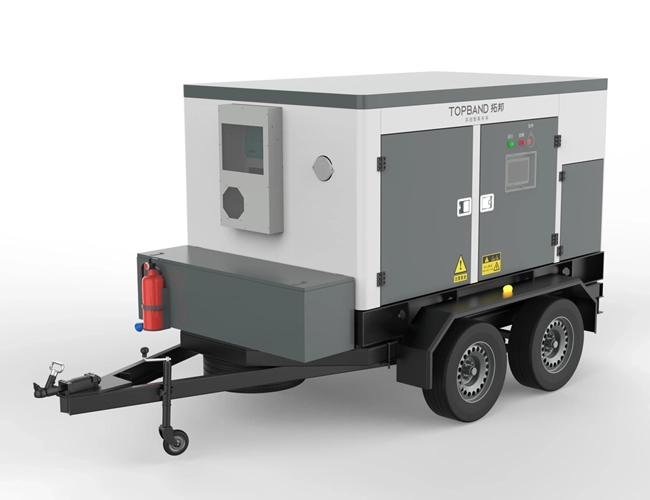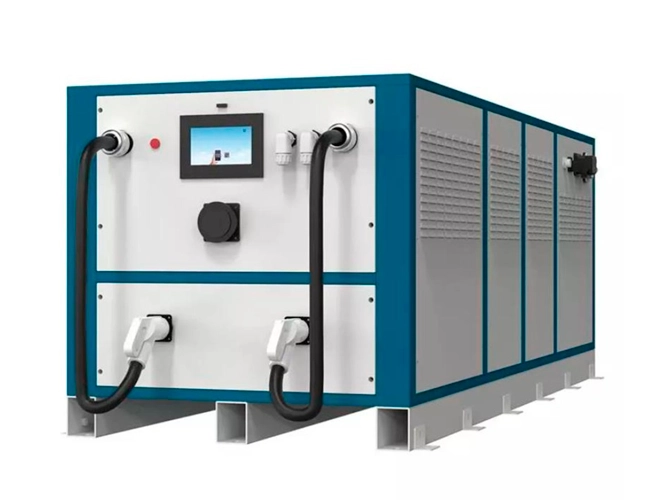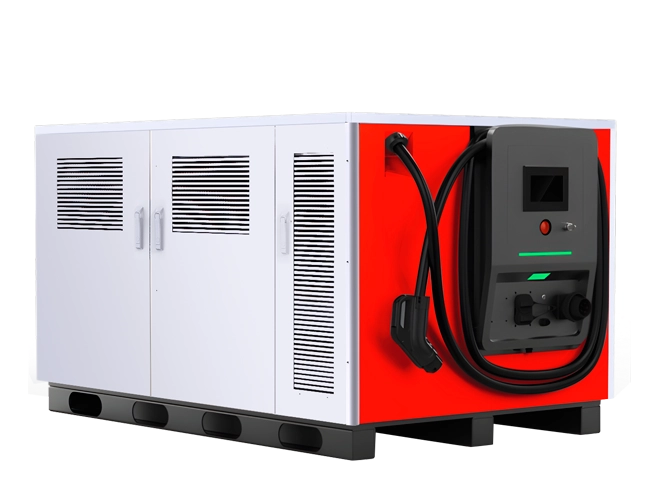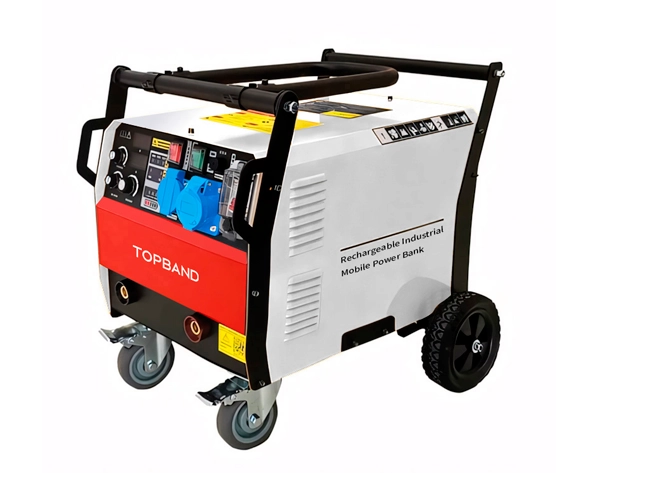In the dynamic energy landscape of the Middle East, mobile energy storage in Middle East is emerging as a game‑changer, offering unparalleled flexibility and resilience. From desert solar farms to urban microgrids, Portable Energy Storage System solutions are empowering businesses and communities to harness clean power on the move—stabilizing grids, reducing peak‑load costs, and ensuring uninterrupted operations even in the harshest environments.





The Middle East has long been synonymous with oil and gas, but rapid diversification efforts—driven by Vision 2030 in Saudi Arabia, the UAE Energy Strategy 2050, and ambitious solar projects in Jordan—are catalyzing a shift toward renewables. In tandem, the need for mobile energy storage in Middle East has skyrocketed. Harsh climates, remote sites, and grid‑stability challenges make Portable Energy Storage System solutions particularly attractive for industrial parks, off‑grid communities, and emergency response scenarios.
Government incentives and public‑private partnerships are rolling out large‑scale energy storage tenders, often coupled with photovoltaic installations. For example, a 50 MW solar‑plus‑storage project in Abu Dhabi’s Sweihan plant has demonstrated the viability of fast‑deployable battery assets to support peak shaving and frequency regulation. International OEMs and local integrators are racing to secure market share, differentiating on energy density, modularity, and certification compliance.
As costs for lithium‑ion and advanced flow batteries continue to decline, and as manufacturers earn critical certifications (UL 9540A, IEC 62619, UN 38.3), mobile energy storage in Middle East will transition from pilot to mainstream deployments—unlocking substantial ROI for project developers, utilities, and end users alike.




Shenzhen Topband Automation Technology Co., Ltd. leverages 29 years of smart‑control expertise to deliver industry‑leading Portable Energy Storage System solutions for the Middle East. Topband’s MBMP series—ranging from 2 kW/1.7 kWh tractor‑mounted units to 5 kW/5.6 kWh high‑capacity packs—are engineered for modularity, ruggedness, and smart monitoring.
Rapid Deployment: Pre‑integrated, plug‑and‑play systems minimize site prep and commissioning time.
Scalability: Modular cabinets allow capacity and power scaling in the field without redesign.
Resilience: Robust safety features and thermal controls ensure reliable operation under extreme heat and dust.
Cost‑Effectiveness: Peak‑shaving and arbitrage opportunities deliver fast payback and total cost of ownership savings.
Flexibility: Multi‑mode operation supports grid‑connected, islanded, and V2G use cases.
It’s modular, wheeled or containerized for relocation and rapid redeployment.
Yes—UL 9540A, IEC 62619, GB/T 36276, and local GSO approvals.
Over 4,000 cycles at 80% depth of discharge with liquid‑cooled systems.
Yes, each module supports seamless grid‑connected/off‑grid switching.
Up to 1C rate—fully recharges in about one hour.
Real‑time cloud‑edge EMS with AI scheduling, alerts, and analytics.
Up to eight in parallel per cabinet with master‑slave control.
EV charging support, emergency power, peak shaving, mobile microgrids.
The Middle East mobile energy storage in Middle East market is projected to expand from approximately USD 0.6 billion in 2023 to about USD 2.0 billion by 2032, registering a CAGR of roughly 16.2 % over the period. This growth is driven by rising demand for Portable Energy Storage System solutions across oil & gas operations, grid‐stabilization projects, and emergency backup applications in the region.
Mobile energy storage refers to self‑contained battery modules or cabinets designed for easy transportation, rapid deployment, and versatile integration. Unlike stationary installations anchored to a specific site, mobile energy storage in Middle East can be relocated via tractor tow, forklift, or container chassis—enabling temporary power, grid support, or emergency backup exactly where it’s needed.
At its core, a Portable Energy Storage System consists of lithium‑ion or LFP battery packs, a power conversion system (PCS), a battery management system (BMS), and an energy management system (EMS). These components work together to deliver bidirectional AC/DC power flow, real‑time monitoring, safety controls, and grid‑interactive functionalities. In hot climates, robust thermal management—using liquid cooling or high‑efficiency air conditioning—maintains optimal cell temperatures, preserving performance and lifespan.
Mobile energy storage excels in scenarios where infrastructure is limited or temporary: construction sites, desert research stations, mobile command centers, and disaster relief camps. They can perform peak‑shaving for utilities, provide fast charging support for electric vehicles, or serve as modular building blocks for microgrids. As a bridge between renewables and dispatchable power, these systems deliver both environmental and economic benefits—reducing diesel consumption, lowering carbon footprints, and unlocking new revenue streams through arbitrage and ancillary services.
When selecting a mobile energy storage in Middle East provider, consider:
Certifications & Compliance
Ensure UL 9540A, IEC 62619, UN 38.3, and relevant local standards (GSO, SASO) are met for safety and import approvals.
Performance Metrics
Compare cycle life (>4,000 cycles), round‑trip efficiency (>90%), depth of discharge (≥80%), and C‑rate (≥1C) across vendors.
Modularity & Scalability
Look for plug‑and‑play cabinets or skids that support parallel operation—allowing capacity expansion without reengineering.
Thermal Management
Verify liquid versus forced‑air cooling efficacy, especially for Middle East ambient temperatures exceeding 45 °C.
Energy Management Software
Prioritize systems with AI‑driven EMS capable of peak shaving, demand response, V2G, and cloud analytics.
Service Network
A robust regional presence—local commissioning teams, spare parts stock, and rapid‑response service centers—is crucial for uptime.
Total Cost of Ownership
Factor in CapEx, OpEx, expected lifetime, degradation rate, and incentives or financing options.
Reference Projects
Review case studies in similar climates: oilfields, solar farms, events, and emergency‑response deployments.
Integration Flexibility
Confirm compatibility with existing SCADA, PV inverters, and diesel gensets if hybrid operation is planned.
Warranty & Support
A minimum five‑year warranty with clear SLAs for response time builds confidence in long‑term reliability.
By rigorously evaluating these dimensions, project owners can select a partner who will deliver high performance, regulatory compliance, and lifecycle value for their mobile energy storage deployments.
Topband’s portfolio addresses every scale of mobile energy storage in Middle East demand—from 2 kW tractor‑mounted units to 125 kW/261 kWh integrated cabinets. Core solution lines include:
1.Tractor‑Mounted Series (TBMP‑2000 / TBMP‑3500)
Capacity: 1.7 kWh–2.4 kWh; Power: 2 kW–3.5 kW
Mobility: Forklift pockets and tow hooks for fast relocation within industrial parks.
Use Cases: On‑site tool charging, UAV ground stations, emergency telecom support.
2.Portable Charging Stations (TBMP‑5000)
Capacity: 5.6 kWh; Power: 3.5 kW
Features: WiFi/Bluetooth remote control, rapid 1C recharging, built‑in fire‑suppression.
Use Cases: Field service vehicles, mine rescue operations, pop‑up EV charging.
3.Modular Cabinet Arrays (TB YL / TB FL Series)
Capacity Range: 100 kWh–261 kWh; Power: 50 kW–125 kW per cabinet
Scalability: Up to 8 units parallel, seamless grid/off‑grid switching with STS option.
Cooling: Liquid‑cooling for high ambient, industrial air‑conditioning for IP54 protection.
Use Cases: Solar farm peak‑shaving, microgrid foundation, construction‑site micro‑grids.
4.Energy Management System (T‑EMS)
Architecture: Cloud‑edge integration with MQTT bus, AI scheduling, SOC balancing.
Functionality: Real‑time monitoring, predictive maintenance alerts, V2G and frequency regulation.
5.Turnkey Integration Services
Engineering: Detailed site surveys, tailored single‑container or multi‑container layouts.
Certifications: UL, CNAS, TUV, and local approvals handled by Topband’s compliance team.
Support: Five regional service centers ready for commissioning, spare parts, and 24/7 hotline.
Case Study: In 2024, Topband delivered a 1 MWh deployable storage microgrid to an oilfield in Oman—integrating two TB YL‑261 modules with PV arrays. The system achieved 95% uptime, reduced diesel usage by 30%, and participated in demand response programs to generate additional revenue.
We’re Here to Help!

Mobile Energy Storage Mobile energy storage charging station Lift-mounted mobile energy storage charging station Portable mobile energy storage charging station Mobile Energy Storage Tractor Mobile energy storage charging station -200KWh Mobile energy storage charging robot
Energy Storage Cabinet 215 Degree Electric Energy Storage Cabinet 261 Degree Electric Energy Storage Cabinet
Stacked Energy Storage TP-DW-10KWh-5KW TP-DW-12KWh-20KW
PEDF Energy Gateway PEDF Energy Storage
EMS MW Level EMS Energy Storage Controller Energy Storage Controller Energy Storage Coordination Contriller Integrated Controller
Photovoltaic Equipment DC Combiner Box AC Combiner Box Grid Connected Cabinet Confluence Box Monitoringunit
Low voltage switchgear Pump control cabinet Fan control cabinet PLC frequency conversion control cabinet GGJ type low-voltage reactive power compensation cabinet GGD type low voltage fixed switchgear GCS type low-voltage withdrawable switchgear GCK type low-voltage withdrawable switchgear
High voltage switchgear XGN-1224 Fully Insulated and Sealed Inflatable Ring Main Switchgear XGN15-12 AC metal ring network switchgear KYN28A-12 Metal Armored Removable Switch Cabinet KYN28-24 Metal Armored Removable Switch Cabinet
Three boxes and supporting Intelligent distribution box XL-21 power distribution box PXD type AC distribution box
Box type transformer ZGS11-120.4 American Box Transformer YBM-120.4 European Box Transformer
Address:Topband Industrial Park, Liyuan Industrial Zone, Shiyantangtou Avenue, Bao'an District, Shenzhen.
Tel:0755-8178 5236
E-mail:topband_zidh@topband.com.cn
1996-2024@ Shenzhen Topband Automation Technology Co., Ltd. Copyright Powered by szzghlWebsite Map